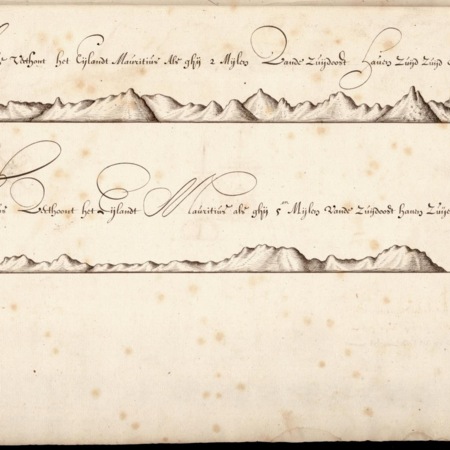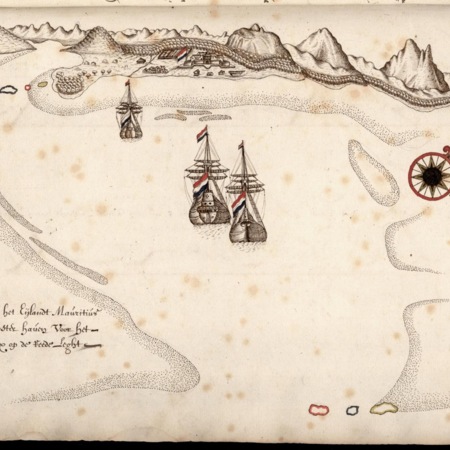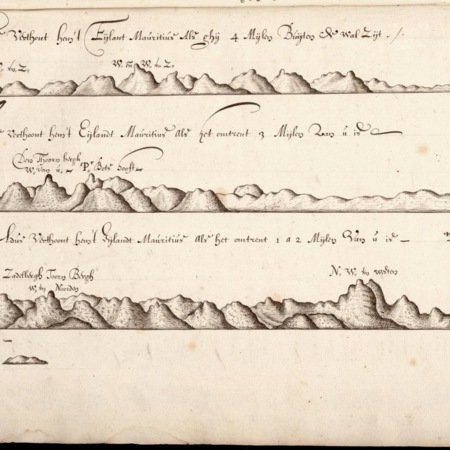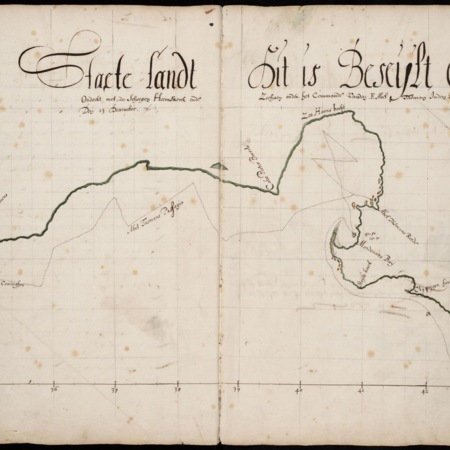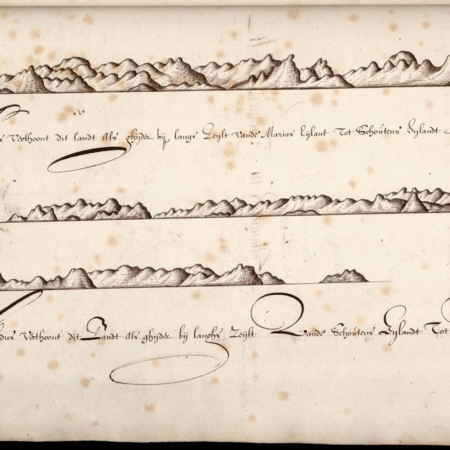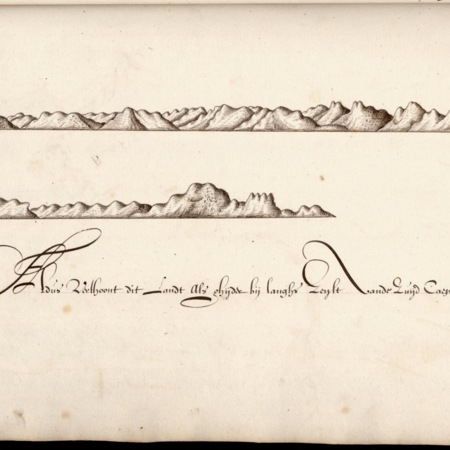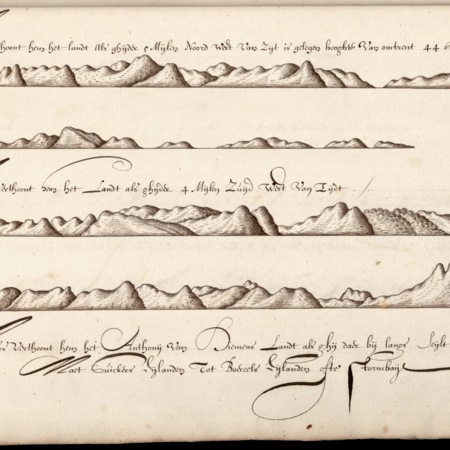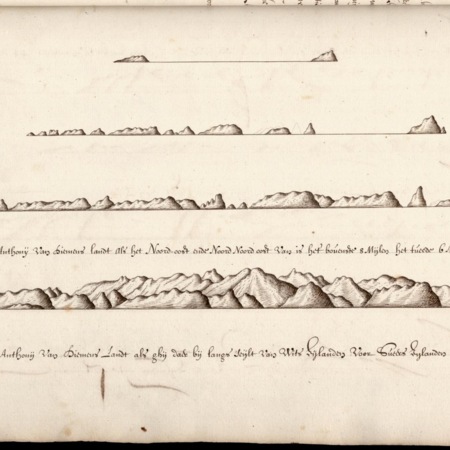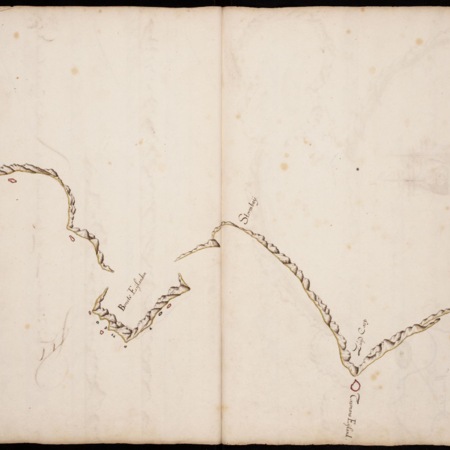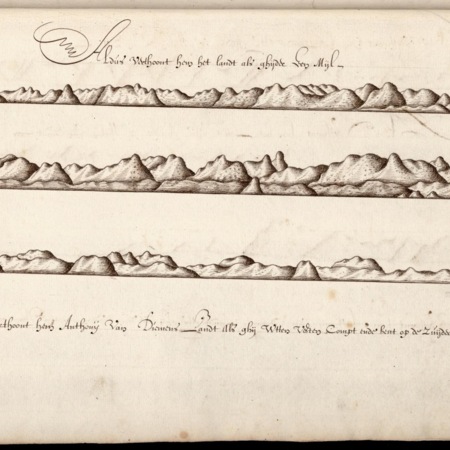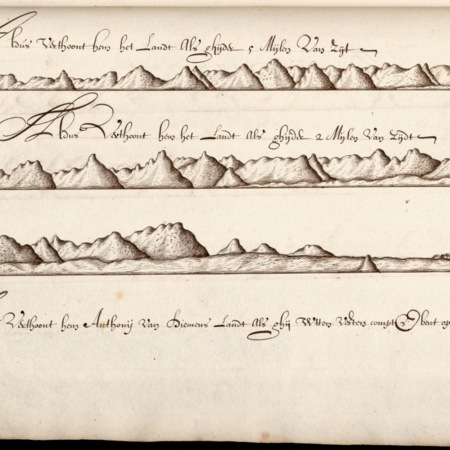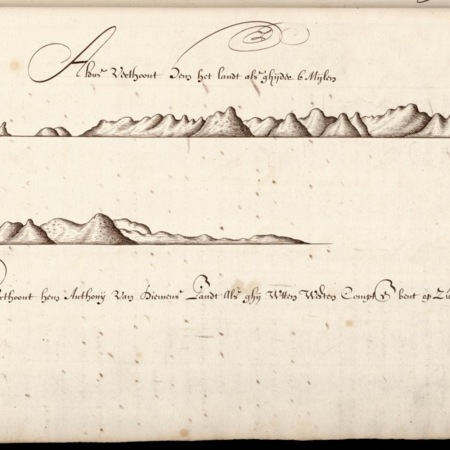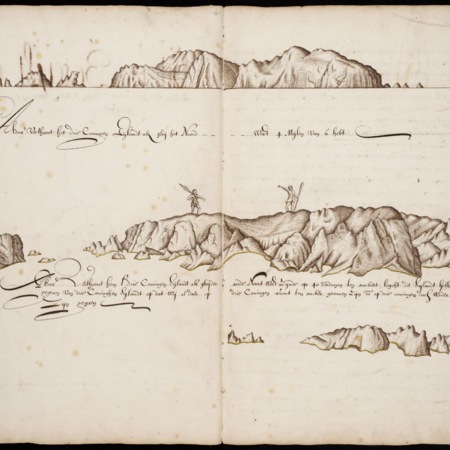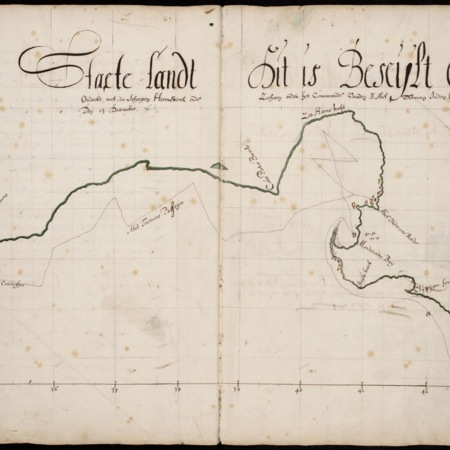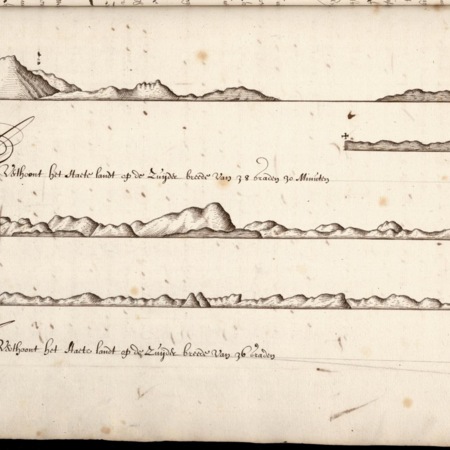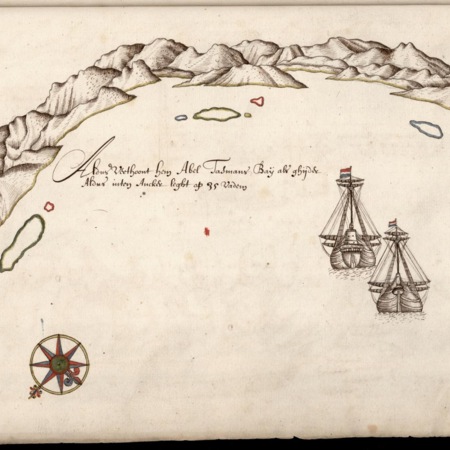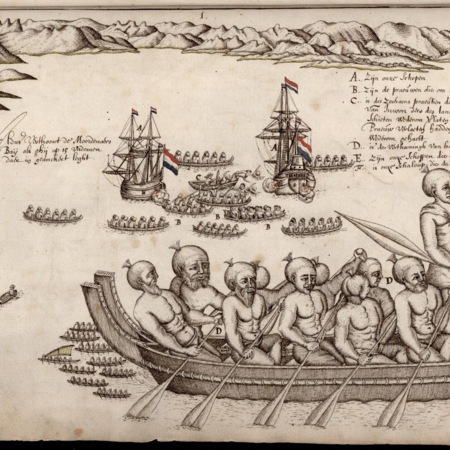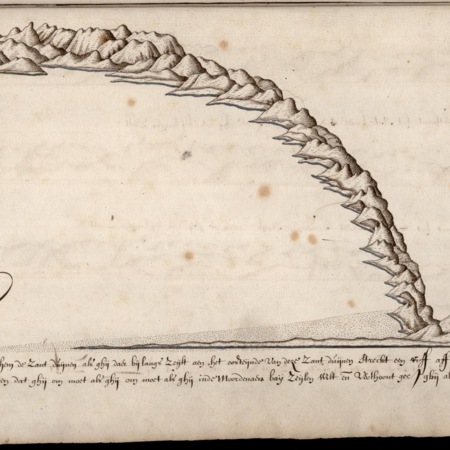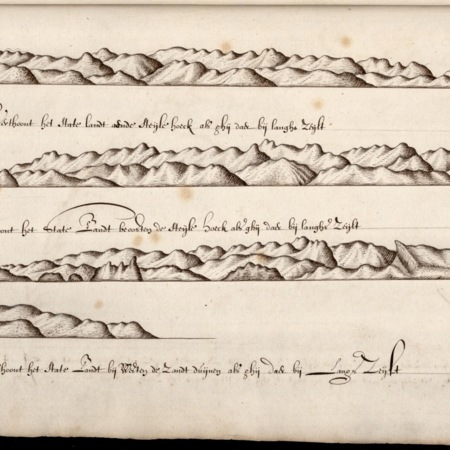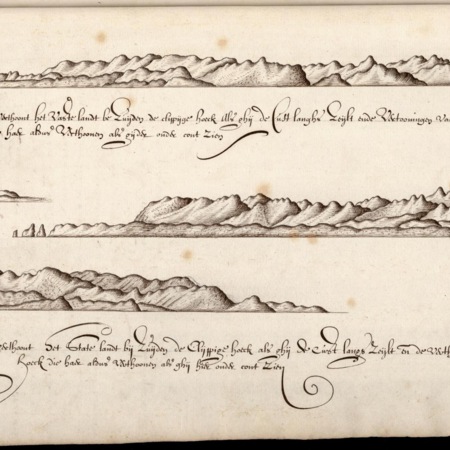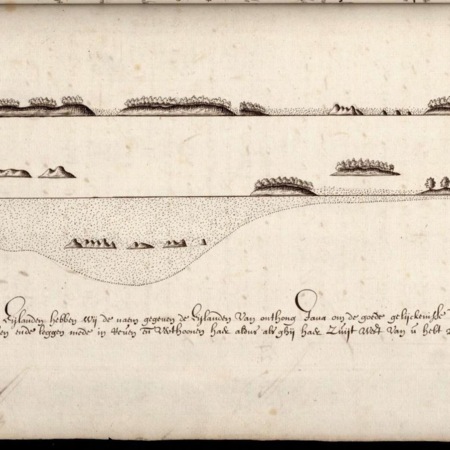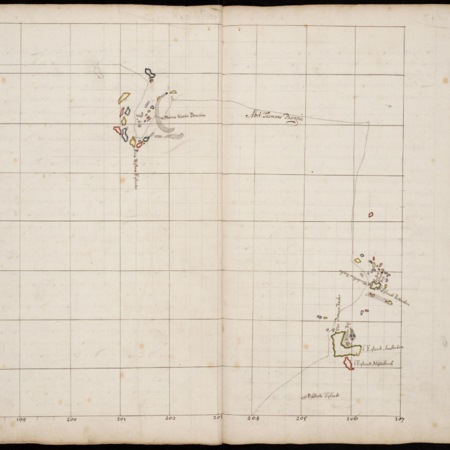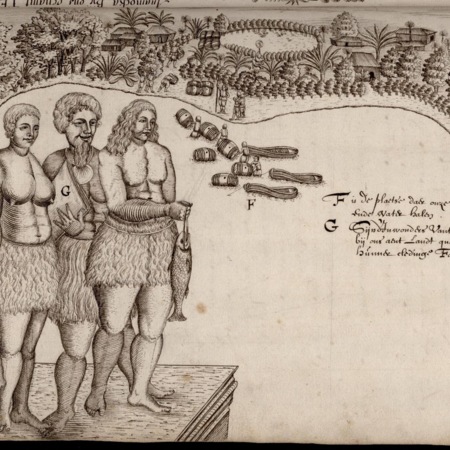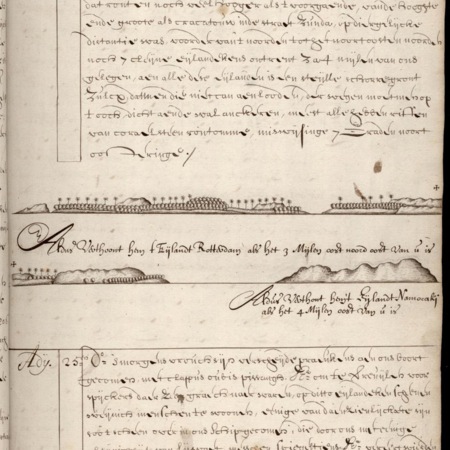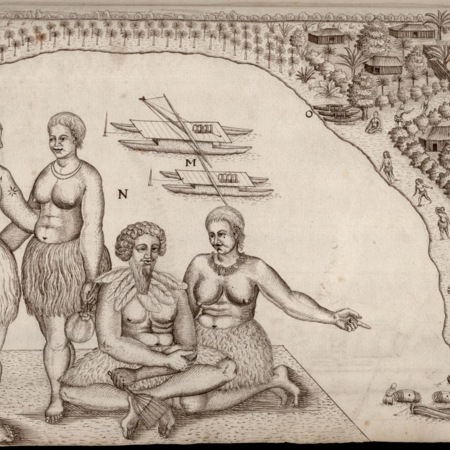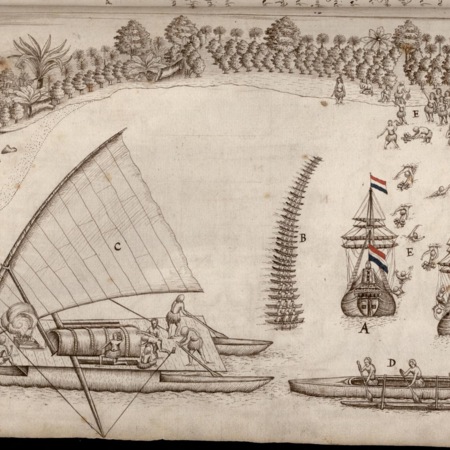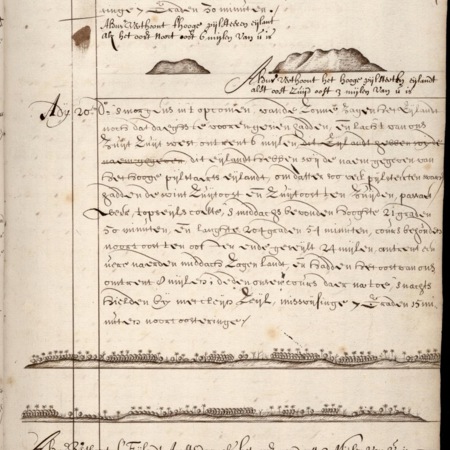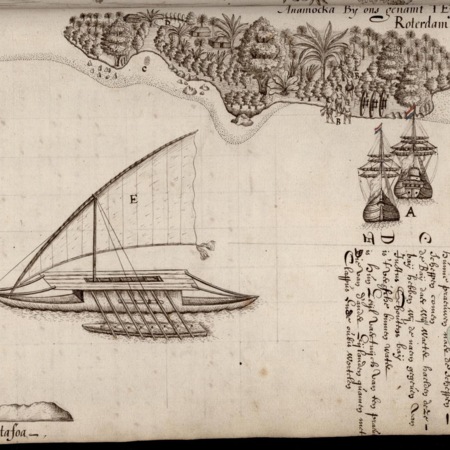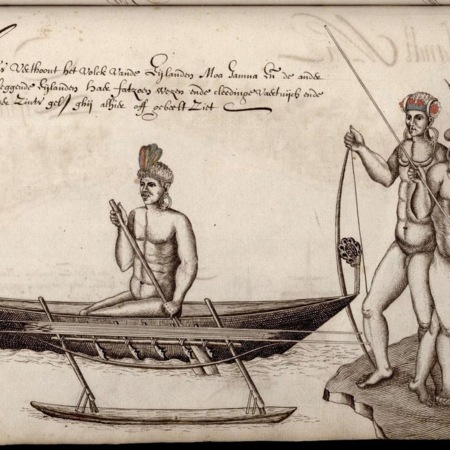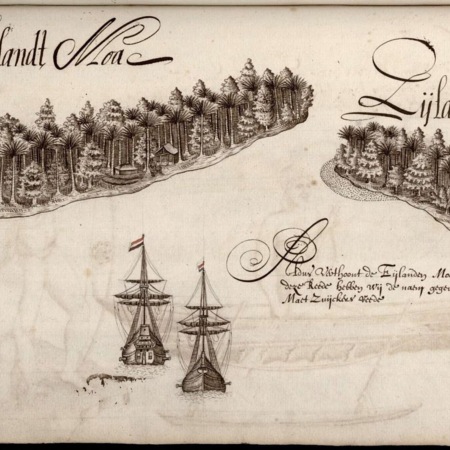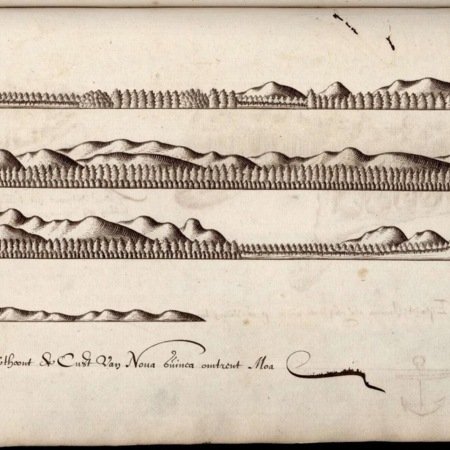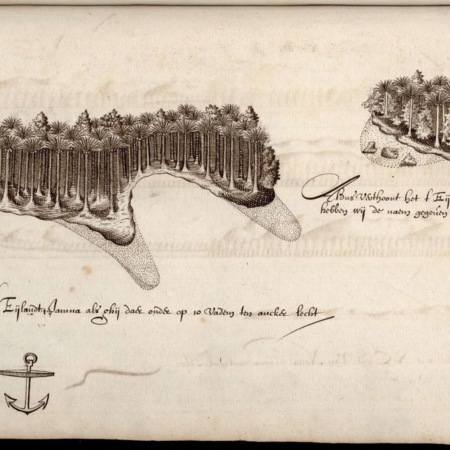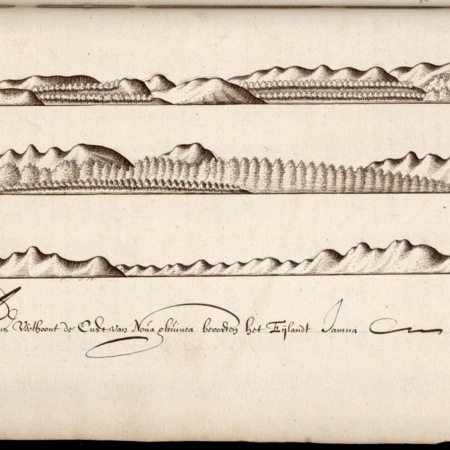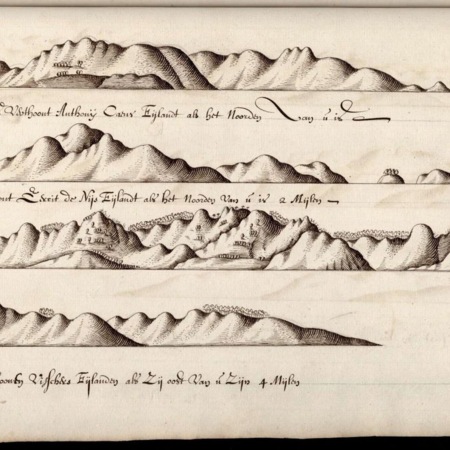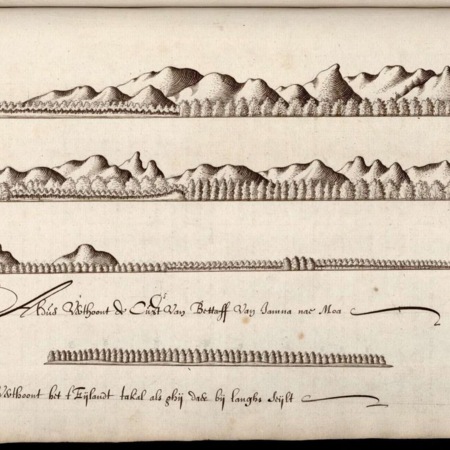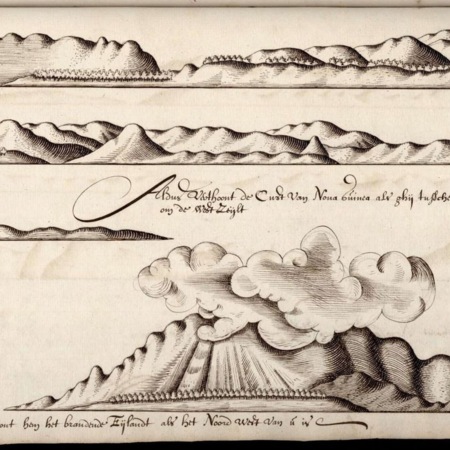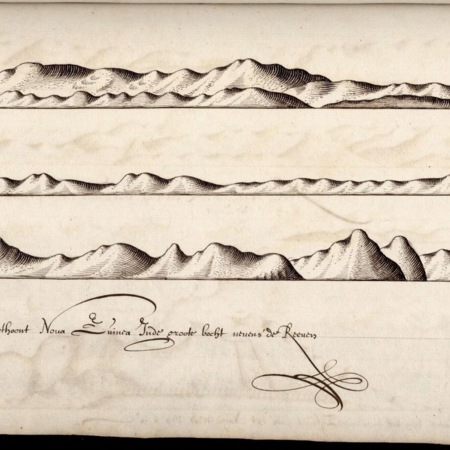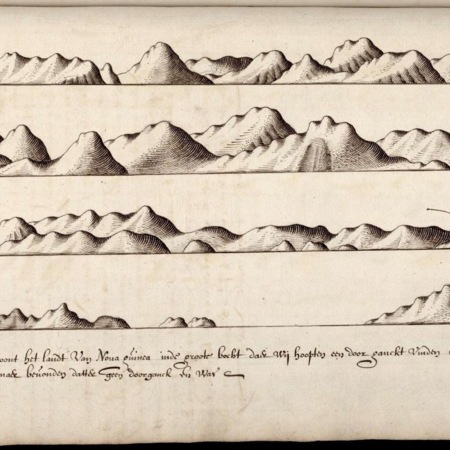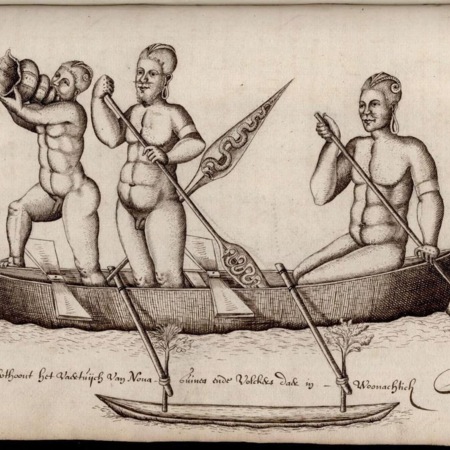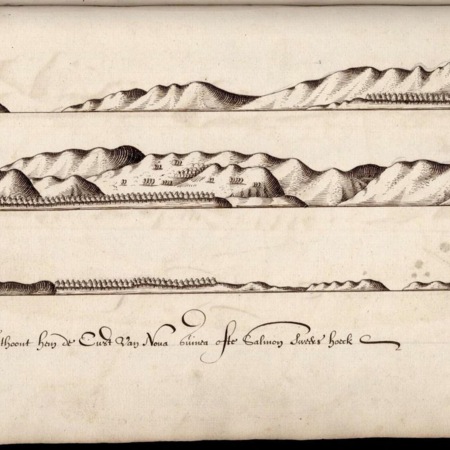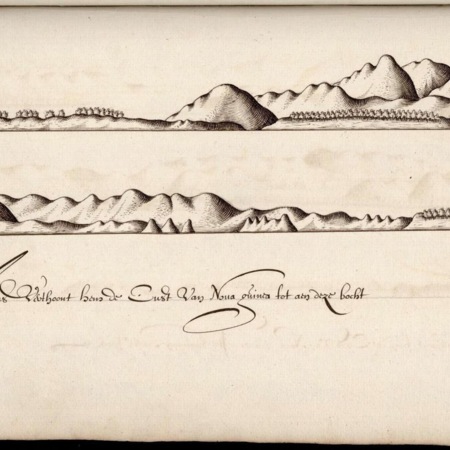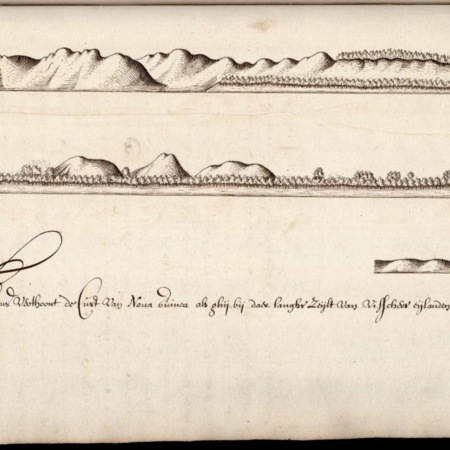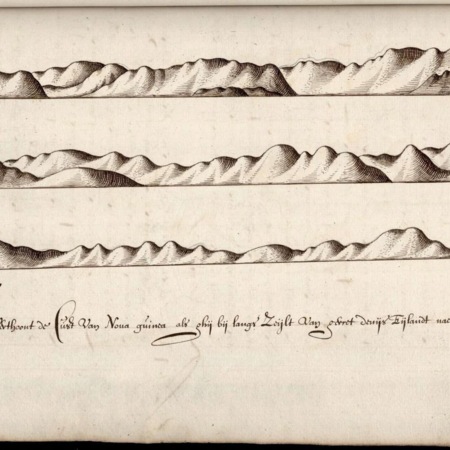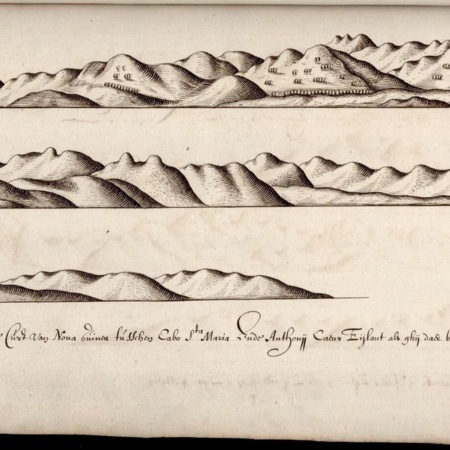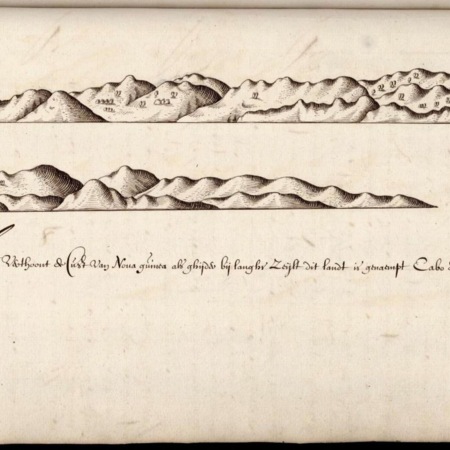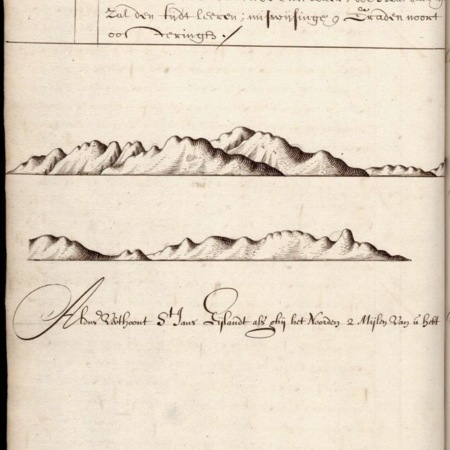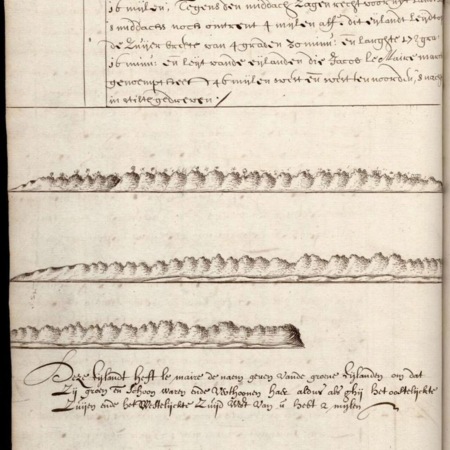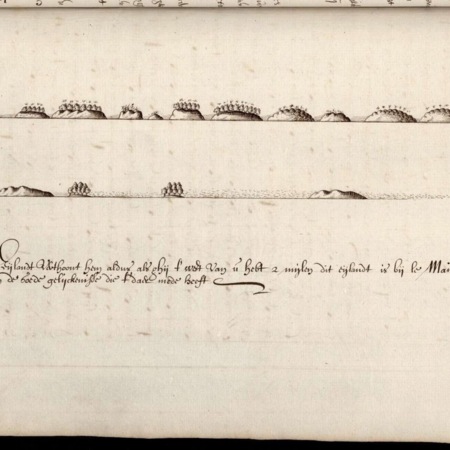In August 1642 Abel Tasman set sail from Batavia with two ships, the Zeehaen and the Heemskerck. His expedition would lead to the first European contacts with the people of present-day New Zealand and Tonga and the discovery of Tasmania, south of Australia.
First, he was supposed to sail much further south than had been attempted before and to explore eastwards. The VOC wanted to know the size and extent of the so-called Terra Australis, a massive continent rich in resources that was presumed to exist somewhere south and east of the known Indies archipelago. Contemporary maps showed patches of what we now know as the north and west coast of Australia. However, at the time, it was unclear if these patches actually belonged to the presumed continent of Terra Australis, which was imagined to be much larger than Australia. As was usual for the time, the VOC was looking for opportunities to acquire gold and silver and to establish new trade routes. Further, it also wanted Tasman to search for potential passages to the east from which the Dutch might reach the Spanish possessions in Chili, as the Dutch were still at war with the Spanish at this time. A final important question that Tasman was to answer, was whether the island of New Guinea was connected to the landmass we now know is Australia, or whether these lands were separated by sea.
Tasman first set sail to the island of Mauritius to deliver supplies to the Dutch post there and to stock up on his own supplies before commencing his explorations. From Mauritius, the Zeehaen and Heemskerck then sailed southeast. However, the weather turned very bad, with storms, snow and hail pummelling the ships. The expedition’s leaders decided to maintain a more northern route than they had been assigned. Because of this decision, while sailing eastwards to the south of Australia in late November 1642 they encountered a large island they named Van Diemensland, after the VOC’s Governor-General. The island would later be renamed Tasmania. Despite observing some signs of life, the crew failed to make contact with the local population.
Continuing their journey, Tasman sailed northeast and again sighted land. At 18 December 1642 anchored at what is today the Golden Bay of the South Island of New Zealand. The next day a violent clash occurred with the local Maori population in which several sailors lost their lives. Continuing his journey, Tasman failed to find the Cook Strait separating the South Island and North Island and continued further along the coast before turning northeast after reaching the northern-most point of New Zealand. Shortly after, on 8 January 1643 he encountered southeast currents which he presumed might lead to a passage towards Chile, though this could not be confirmed just based on his observation.
The expedition continued northeast and encountered various islands, among which the Tonga archipelago. They anchored at Tongatapu, its largest island and Nomuka in late January 1643. Here the encounter was much more friendly. After exchanges of gifts and stocking up on supplied, the expedition then turned north, before setting a western course and beginning the return voyage. The ships then passed north of the Fiji islands, the Solomon Islands and sailed along the northern coast of New Guinea. While approaching the island of Ceram in the Moluccas in May 1643, it was decided to abort the final part of the mission to find out if New Guinea and the South Land were connected. They arrived back at Batavia at 15 June 1643. The expedition had discovered some new lands, but disproved that Australia was part of an immens southern continent, shattered expectations about supposed riches there, and failed to provide definitive answers on the questions which the expedition was supposed to resolve.
